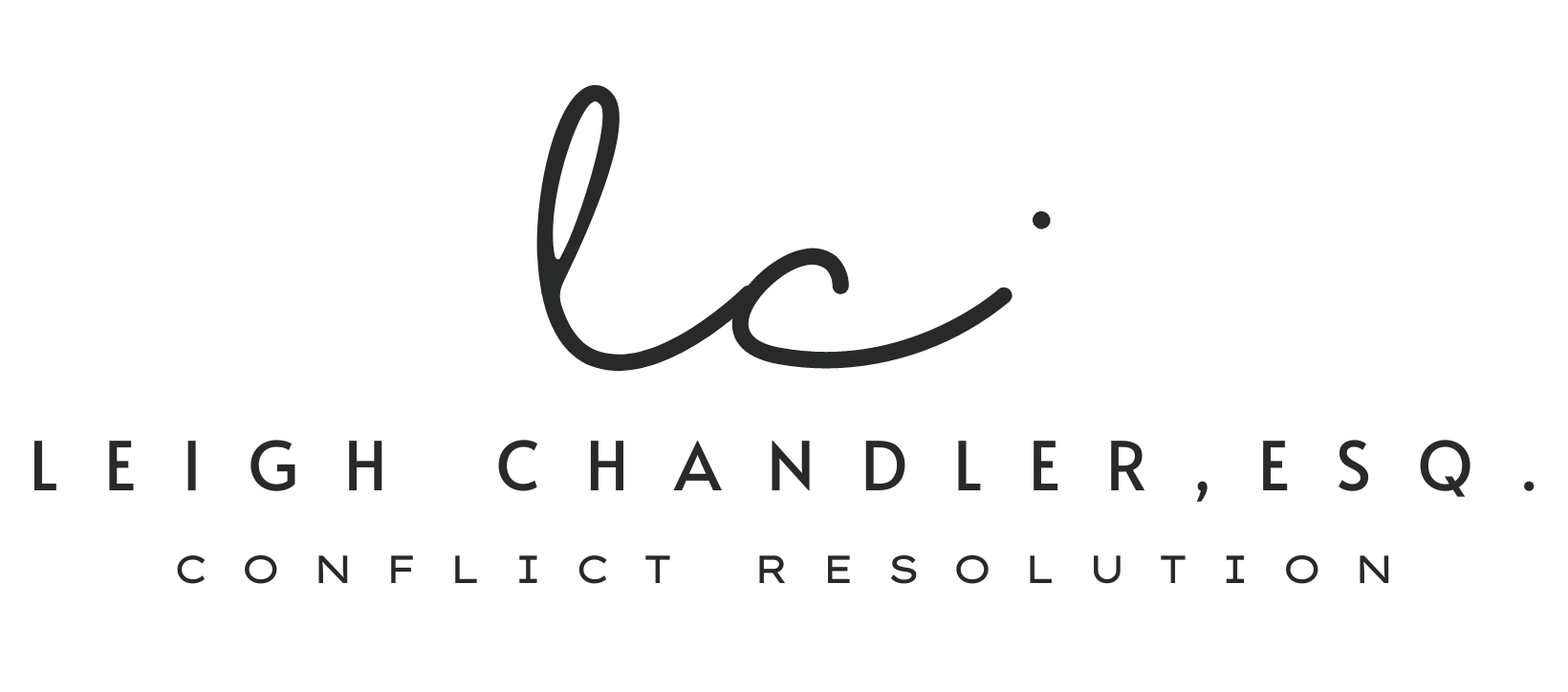As a mediator, I have had the privilege of helping to resolve many disputes between lawyers and clients. In this series of posts, I’m giving some tips for preventing and resolving these disputes, generalized to apply to any professional/client relationship.
In my last post, I shared three of the most preventable things that I regularly see in professional/client conflicts: (1) mismatched expectations; (2) inadequate “people skills”; and (3) “stealth” conflicts that grow while the professional is busy with other things. In this post, I’ll talk about a few simple things you can do once you’re in a conflict with a client to maximize the chances that you quickly come to a resolution that satisfies both of you.
It is no fun to be on the receiving end of complaints and criticism.

It is natural to want to run away from the issue, apply a quick fix to get it out of your hair, or react with defensiveness and anger… but those reactions are almost always counterproductive. In this post, I’m going to share three simple things you can do when it’s too late to prevent the conflict with your client, but there’s still time to resolve it outside of a formal process, and one bonus tip you can use to turn this unpleasant situation into a learning opportunity.
- Explore the problem. We talked about this in the last post, but it’s still important. Whether your client is coming to you with a minor issue or a full blown I’m-not-paying-you-another-penny meltdown, nine times out of ten, there’s more to it than they are saying. Take a deep breath, put your curiosity hat on, and explore to make sure you and your client fully understand what’s wrong. Skip this step, and you’re likely to offer short term, short sighted, and possibly harmful solutions. But how can you be friendly and curious in the face of your angry client? That’s where tips two and three come in.
- Don’t take it personally. This isn’t just conflict resolution advice, it’s life advice. The less you take personally, the happier you’ll be! But if you apply it anywhere, apply it when facing your unhappy client. You might have to defend yourself in writing, especially if the client is really making groundless accusations, but outside of creating a paper trail, defensiveness will get you nowhere. (And you’ll probably make a better paper trail if you’re not feeling defensive.) So, accept that everyone makes mistakes, some clients will be upset no matter what you do, and anyone in business will have an unhappy customer at some point. It happens, it’s not a big deal, and it is where you are right now. Why fight with reality? Drop the idea that you need to blame anyone or defend yourself, and focus on them. That’s all an angry person usually wants! By putting the spotlight of your attention on their problem, without anger or defensiveness, you go from being the enemy to being on their team. If you don’t believe me, think about the last time you were mad at somebody – would it have made you feel better to hear about why you shouldn’t feel that way? Didn’t think so.
- Imagine good intentions. This can be really hard. By the time you and your client are in a conflict, you probably don’t have especially warm feelings for each other. You might feel like they’re being unfair, they just don’t want to pay you, maybe they never intended to pay you. You might feel attacked and unappreciated. You might have some strong opinions about their intelligence or personality… and you might be right. But even if you’re right about them – maybe especially if you’re right about them – that attitude won’t help you communicate with them. The antidote? A little imagination! Make up a story that explains their behavior without ascribing bad intentions to them. You’ll treat them better if you can at least imagine a scenario where they are not a comic book villain intent on destroying you.
Since you read to the end of the post, you get a bonus tip:

Examine recurring issues! Any issue you’ve encountered more than once, and any string of client complaints in a short period of time, is a trigger to take a look at how you’re doing business. Even if you’re not doing anything wrong, you’ll be able to change something to make yourself more conflict-proof.
We’ve identified some preventable sources of professional-client conflict and looked at a few tips for resolving those conflicts early, so it’s time to talk about how to get a good resolution in mediation. I’ll post that next week.
Thank you for reading!
